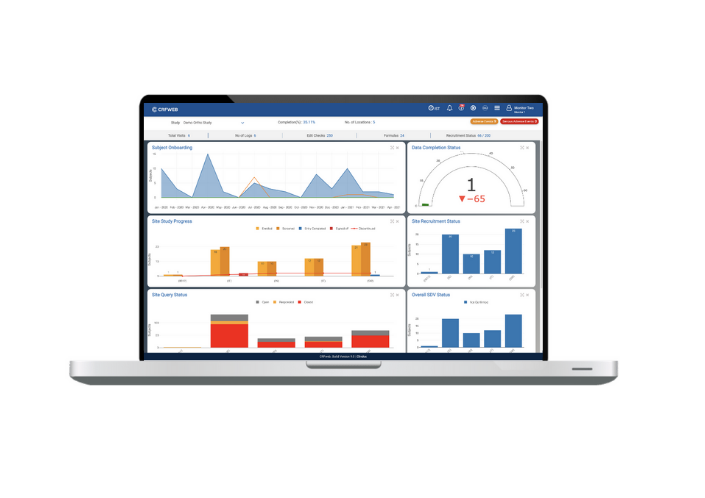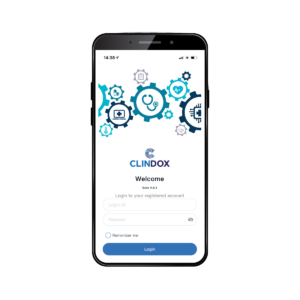ARTICLE 5- EDC pricing: getting value for your money
In the fifth of our series of articles on Managing Data and eClinical solutions for Medical Device Companies, the CRFWEB team discusses HOW to ensure that you are getting the system and services you need at the best price possible.
We’ll explain WHY pricing varies so much and WHAT cost drivers underpin the price you’ll be paying.
We’ll look at WHAT you need to do to reduce the risk of unexpected hikes in cost over the lifetime of your project.
EDC Pricing – Selecting your System and getting value for money
EDC Pricing can be a thorny subject. The exponential growth in the number and scope of medical devices has created a demand for EDC at a lower price point compared to the pharma and biotech sectors. Some 75% of this sector is comprised of SMEs for which six-figure EDC deployment costs are largely beyond consideration. So, it makes sense to narrow your vendor search to target companies such as Clindox that have, from the outset, developed a focused business model that delivers powerful yet highly cost-effective EDC solutions for medical device trials and investigations.
Let’s assume you’ve read the last article in this series and taken our well-meaning advice to heart and diligently developed detailed RFIs, sent them out and culled those responses that don’t make the grade. Let’s further assume that on the basis of your RFI, your responses to requests for clarifications and further internal discussion you’ve sent out detailed RFPs. You’ve got a good feeling about this, the next round of culling – or indeed making your final choice – should be reasonably straightforward, shouldn’t it? And then the RFP responses start arriving…
Apples …and wait, pears? Mangos, oranges?
So, your RFPs to compare apples to apples has yielded some interesting responses. Some are there or thereabouts. They have taken into consideration and responded point by point to your requirement for the right blend of tartness vs sweetness, size, colour, percentage of spoiled fruit, expected shelf life, packaging specification, pallet size and guarantees on delivery frequency. Others, though, are not terribly transparent on these well-defined metrics and instead parcel them up in unhelpful ways. Some, even, want to simply take a cut of your total sales – on a sliding scale!
Often, you’re not entirely sure you’re looking at a proposal for apples and furthermore, you’re getting the feeling that once you’ve unpicked the detail of these “exciting” bundle options and fully understood the small armada of rider clauses, the supposed headline price offered is someway short of what you’ll be paying in reality. So it is, all too often with EDC systems.

Common approaches to EDC pricing
There is, unfortunately, no standard approach to pricing for EDC systems. You will quickly find that the proposed price will vary surprisingly on a bewildering range of variables – not all of which will feel to you like they are that important – given what you want to do – or seem to be subject to eye-watering variability from vendor to vendor. A general rule is that if a proposal looks really inexpensive it’s either not going to be what you want – or the final bill will be hardly on nodding terms with the headline quoted price.
The factors that contribute to the final price you will pay will often include:
Build
Build is probably the single most important variable which can lead to the most alarming differences between a budget based on early expectations and the actual, final cost. The more you can do yourself, the lower the build cost will be. Ensuring that your system of choice has powerful yet easy-to-use tools that promote self-sufficiency is very important when it comes to keeping this key cost element under control.
However, it’s likely that, in most instances, you will still need to work with your EDC vendor to develop the system to meet the needs of your protocol – not only making use of the toolsets available but also perhaps the need for some bespoke development. The cost of this will be cost plus, so where those services are delivered from will matter.
Location and capacity of data servers
These costs can and will vary very significantly depending on geography, the capacity required, regulatory considerations eg., GDPR – and the deals your EDC provider has secured.
Number of sites
The more sites are in operation, the greater the requirement will be for support and so it’s not unreasonable to itemise the number of sites as a variable cost element. A question to consider is whether the contribution to the overall price that this variable element provides seems reasonable…
Geographic location of sites
If a study or investigation is transnational, then differing countries may well bring differing challenges in terms of languages required for support as well as greater complexity concerning privacy this may well translate to higher costs for build and support based on site locations.
Number of patients
A classic variable; more patients means more issues with veracity of data entry, missing data etc., all of which may feed through to increased use of support. As with other factors, it can be argued that this variable is natural, but again, the question is, is its contribution to the overall price reasonable?
Customer support/service levels
Many of the factors described here translate as increases in support required, primarily, however the type and level of support itself also a variable factor, and one that again displays a wide range of variability between vendors.
Number of data points
A similar and related issue to the number of patients – the more data captured due to the size of the study population and/or the number of pages of the eCRF, then the greater the need for server capacity and performance. Again, is this variable contribution reasonable?
Number of edit checks
Really this is a part of the build and as such it’s not unreasonable to see this as a linear variable in cost, each edit check will equate to a piece of work undertaken in configuration, but again is the figure per check, above and beyond a bundle price reasonable?
Security features
You mean I pay extra simply to be compliant? Not an unreasonable question. Security is at the very heart of EDC – the platform should be able to function in the most stringent of regulatory environments surely without this being an extra cost?
Number of exports
Again, often a price variable but really, once the export is defined and configured should the number of exports really have a significant impact on price?
Trial or study nature e.g. therapeutic class
Let’s be honest, here. This is just an attempt to derive a price based on perceived value. This might be OK, it might not – but it’s fair to consider whether you’re paying twice for the same functionality – one for cost plus and a second time because the vendor thinks you can wear it due to the complex nature of the therapeutic area and indication you are tackling…
Operational features
So, the basic system seems excellent value at the outset, but actually you need lots of bolt-ons which inflates the price – often alarmingly – for the system to do what you actually want it to do.
SUV or electric urban roadster?
So, until you have a reasonably clear idea about what you are trying to do – that you are pretty sure about the critical operational parameters of your study or investigation – the price is bound to fluctuate, and no-one would regard that as unreasonable. However, HOW MUCH of the actual cost you end up bearing varies from your initial expectations will be hugely dependent on what package you choose. Opt for the wrong package and any variations or modifications that inevitably develop once you actually get started could end up costing you a very significant amount of money.
In our experience it’s quite possible that the actual price paid for licenses, support and services can easily vary by a factor of two or more (in either direction) from an initial assessment of cost to the final cost at initiation of the study or investigation plan.

Exploding complexity
By now, you’d be forgiven for thinking this article is really no more than a thinly veiled attempt to justify vendor opacity when it comes to pricing. There tends to be a mismatch between reasonable customer expectations based on outcomes and vendor price narratives that end up focused on widgets and quantities – some of which may be meaningful, some of which are not, all of which are probably overstated as price considerations to a greater or lesser extent.
The reality is that all vendors will need to offer relatively similar products and be able to do similar things so that they can offer you the system you need. No matter how the final price to you, the customer, is calculated, it’s simply an exercise in cost plus acceptable margin. However, the cost the vendor bears to be able to do so is, itself, variable and will depend on factors such as:
- Sophistication of system
- Cost to the vendor of data server capacity
- Location of development and support teams
- Business maturity and back-office capabilities
Margin per deal will also vary depending on factors such as:
- Size of installed base
- Length of time trading
- Industry feedback
It’s not unusual for companies in the medical device sector looking for an EDC vendor to first get a sense of the LIKELY price range from the headline cheapest to headline most expensive and then focus their effort exploring the middle ground in more detail, seeking the best technical fit. By no means is this a bad strategy, but we’d urge that you take the above factors into explicit consideration when making EDC pricing comparisons.


The path to simplicity in EDC pricing
We are beginning to see vendors grasp the fact that such opaque and complex EDC pricing mechanisms are increasingly anachronistic and simply do not meet the needs of SMEs in particular.
Some vendors are trying to offer simpler packages which bundle capabilities in an apparently logical way, however, many of these packages still tend to be light on detail with respect to the cost of build, change management and support and are likely to penalise you significantly if, in reality, you end up overstepping any of your chosen bundle boundaries.
Before a final decision is made, then, be sure that you fully understand which of your study or investigation parameters are most likely to be subject to revision (and how) – and what the cost implications might be.
How CRFWEB can help you
Clindox has a natural advantage over many of our competitors as we can leverage the benefits of:
– Long established, low cost-base development and support centres of the highest calibre
– High degree of sponsor self-sufficiency for study builds (with cost-effective client onboarding processes and expert support as required)
– Solution stack delivered through a simple, flexible SaaS model
Objectively, cost-plus – the true driver obscured by the smoke and mirrors of pricing plans – favours our offer and to this end you will find our proposals will be far simpler than any of our competitors and notable by the absence of arbitrary, hard-to-justify significant variability.
All in all, we know that with our low cost-base and our ongoing commitment to self-sufficiency, simplicity and transparency, we will always provide an excellent value proposition without compromising on features or quality… whichever sector you’re from, and whatever your study or investigation needs are.








